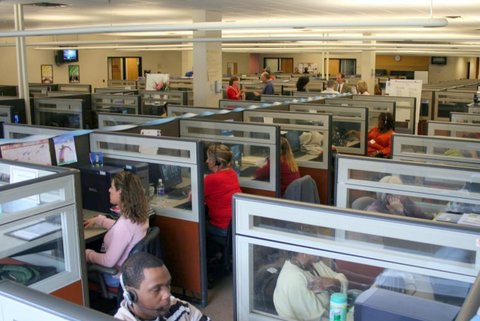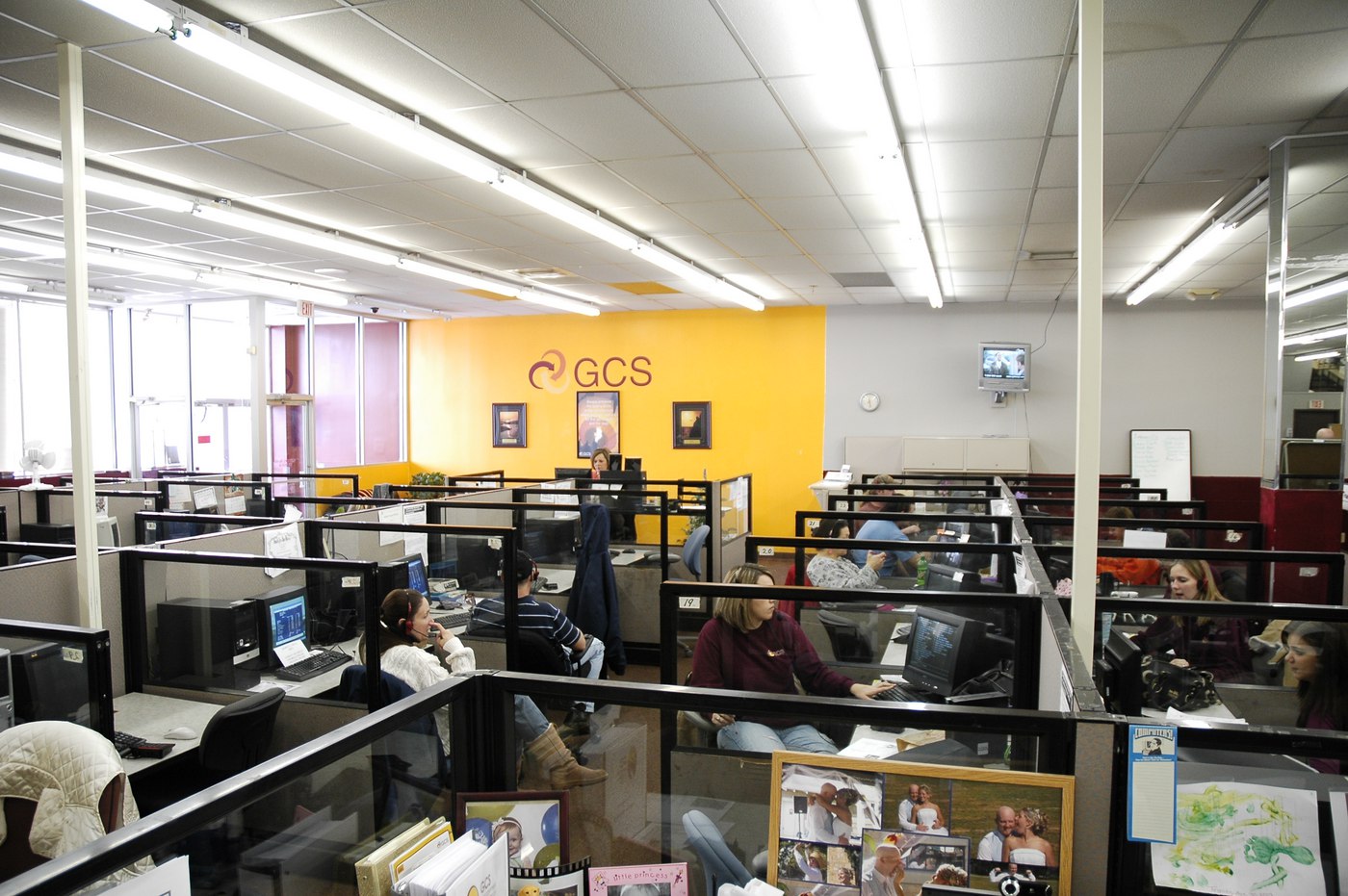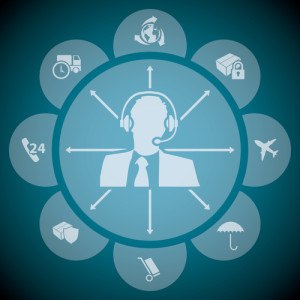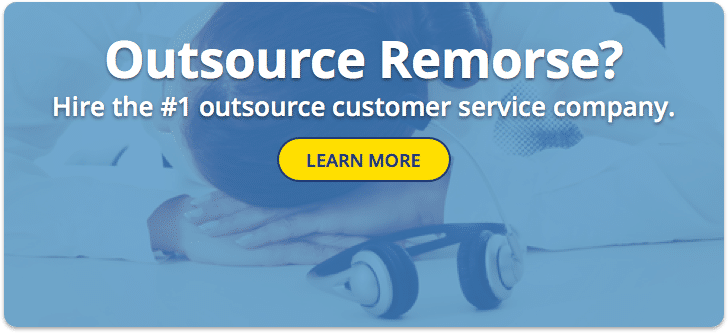Contact Center Workforce Optimization & Management
 “The best workforce optimization goes beyond the numbers & cultivates an understanding about how the numbers impact workforce management.”
“The best workforce optimization goes beyond the numbers & cultivates an understanding about how the numbers impact workforce management.”
Achieving the best customer satisfaction while minimizing costs comes with having key data that helps you see and understand how to manage your workforce. Workforce optimization is about more than just collecting data—it’s also about understanding what the data means for your customers and your staff.
Although software can give you the hard numbers, the best contact center workforce optimization (WFO) goes beyond the numbers and cultivates an understanding about how the numbers impact workforce management. True workforce optimization goes beyond the data, to the trends, and makes the best decisions based on both.
Optimizing your workforce requires an understanding of the decisions people make. In this case, the decisions of your staff and customers and why they make them. Only then can you prepare properly and optimize your response to improve customer satisfaction at the lowest possible cost.
 “Anticipating your customers’ needs can help eliminate call spikes & the need to overstaff.”
“Anticipating your customers’ needs can help eliminate call spikes & the need to overstaff.”How Software Trends Affect Contact Centers
Recognizing software trends is a foundational requirement to workforce optimization. Truly understanding the data is where the real results are achieved. We’ve noticed that many managers understand the hard data, but they don’t grasp the reasons behind that data.
For example, if you have data that shows a trend of call spikes around 4 p.m., what’s the reason behind that trend?
It is not often easy to uncover the reasons behind the data. Take steps to enhance the customer experience through awareness of software trends and cultivating an understanding of them.
Here’s a recent example from one of our clients. A transit company saw spikes in calls received on the Friday after Thanksgiving from 9-11 a.m. Without digging into the data you may decide to overstaff for that spike.
If instead, you went deeper into the meaning behind the data and realized the spike was due to people scheduling rides back home after staying with family for the holiday, you could have booked that round trip when you scheduled the first leg. Anticipating your customers’ needs would eliminate the spike and the need to overstaff.
Uniting software with customer trends works to create the entire picture. In this way you can take steps to modify the behavior and optimize the workforce at a lower cost.
How Staffing Trends in Contact Centers Affect WFO
Staffing trends are one of the most important trends to monitor for optimal workforce management. Most of your budget is going to go towards staffing needs—so you’ll need to understand the data for staffing trends, how to interpret it, and what it means for your customers.
When looking at staffing trends, understand the controllable issues first. Were all the seats filled? Did your call center have any technological problems? Were there management issues, or did everyone take lunch at the same time? Once these questions are answered, move on to things out of your control, such as traffic, parking, promotions, etc.
{{cta(’98f38b19-1371-4c85-aeb1-0d6d520286d6′)}}
Here is another recent example:
Staffing trends showed one of our client’s centers needed to over-schedule the Customer Service department on Fridays and Sundays. How did we figure that out? Trends showed that Fridays required over-scheduling due to the higher than normal chance employees would take vacation or call in sick on those days. Sundays were also the busiest day of the week at the center. Taking into account certain expected levels of absenteeism allowed management to over-schedule those days so the right number of customer service representatives (CSRs) would be on the phones to handle the volume.
Other trends to consider includes increasing staff when sick banks and vacation days are refilled and taking company holiday policies into account as well. Pulling data when banks are refilled shows you the preferred days out among your employees so you can accommodate with extra staff. It’s important to try to achieve a balance. For example, if the data shows many people tend to take the day off before or after a holiday, it is probably because of your company policy surrounding holiday pay. How will you compensate for this? You’ll need to understand your staffing trends and what motivates your employees.
The Importance of Call Center Cross-Training
 “Optimize your workforce by hiring appropriately for each station and shift”
“Optimize your workforce by hiring appropriately for each station and shift”Is your staff trained to handle one type of call or several? Evaluate your workforce based on knowledge, skills, and experience. Can you fill in the gaps by cross-training employees, therefore allowing them to handle nearly any type of call? Optimize your workforce by hiring appropriately for each station and shift, beginning with full-time personnel. Staff who are trained to handle multiple calls and questions are more valuable and efficient than staff who are only trained to handle one call or type of question. If you have outbound calls to make or emails to answer and other time flexible tasks, you can use those employees to answer calls during peak times.
In addition to cross-training, another way to gain efficiency for a spike in traffic is a focus on second call avoidance. This means your staff anticipates the “next” thing a customer would need. For example, if your customer orders a new printer, will they need replacement cartridges or paper?
Staffing trends also show that overlapping is important due to lunches and breaks. This is where staff trends and customer trends collide, based on the fact that your employees like to break for lunch between 11:30-1:30, and your customers find this a great time to call because it’s their lunch break too. How do you reconcile these conflicting trends?
Hiring and scheduling appropriately is the key. Scheduling different shifts, such as 7:00 am to 4:00 pm, 8-5, and 9-6, ensures there’s an overlap for lunches and breaks, allowing you to fill gaps with part-time employees. This way your customers are always getting access to trained staff who can answer their questions at any time of day, especially times that are the most popular to call.
Customer Trends in Contact Centers
Your top processes for evaluating customer trends begins with the basics—when do your customers call; how long does the typical customer call last; what exactly are they calling for?
When evaluating customer trends, consider you can’t change the trends. Customers are going to call on their lunch break, and you can’t change that, but you can change your reaction to it. Exert control where you have control, which is not over customer habits, but over your workforce!
Knowing your customers and their trends is the first step in determining how best to serve them. Ensuring that you’re appropriately staffed during call spikes, cross-training employees to handle more than one type of call, and constantly evaluating customer trends, will help you run a more efficient contact center.
There are ways to influence your customers, but we will save that for another blog.
Trend Monitoring Tools for Contact Centers
Monitoring tools can help you make sense of staffing, customer, and software trends. This includes measuring the service levels every month. This will help determine where you are as opposed to where you’d like to be for optimal workforce management. How many calls came in? What was the average duration of each call? How much time is your staff spending after the call has taken place? By looking at this data and monitoring it as it relates to the service levels, you can determine where you are and where you need to be, and then make the appropriate changes to get there.
It’s also important to factor in your overstaffed or understaffed days and how this relates to the service levels. This is where recognizing a trend becomes paramount, because although these monitoring tools are important, they don’t allow for true transparency unless trends are recognized and accommodated for. The right monitoring tools can help you further understand how to optimize your workforce management.
Measuring your deviation from the service level will determine what changes to make in order to meet your service level agreement. Your service level is an important monitoring tool to use to achieve optimal workforce management.
 “Assigning the more experienced CSRs to more difficult problems, the center can handle more calls, in less time, with the same number of people.”
“Assigning the more experienced CSRs to more difficult problems, the center can handle more calls, in less time, with the same number of people.”
How to Put WFO to Use in Your Call Center – Two Examples
Let’s take a look at a call center that functioned as a technical help desk. During the transition the management team tried to keep as many people as they could in order to save time and money from hiring and training new staff. Then, they evaluated their employees based on what they already knew versus what they needed to know. Conducting trainings as needed is paramount for having a well-trained staff.
Based on their current knowledge, CSRs were placed in categories that accurately reflected their ability to help the customer. Then the caller’s journey was designed to interact with progressively more experienced and knowledgeable CSRs. For example, the first CSR a caller reached was the screener, asking if the caller had restarted their computer. The second CSR could remotely log in to a caller’s computer and walk them through the problem. If needed, a third level of service had a CSR who could help reboot or re-program the computer to fix the problem.
By assigning the more experienced CSRs to more difficult problems, the center can handle more calls, in less time, with the same number of people.
Another example is a center experiencing a 2-hour block every day of 400 calls but with only 300 seats in the center. They could hire more people or build more space, but all this costs valuable time and money.
By looking at the service level data, such as the number of calls per 30-minute interval, talk time, and wrap time, and by using the IVR system better, we created a system where only 212 seats were needed to successfully answer the 400 call demand. That is workforce optimization at its best.
The Importance of Contact Center Workforce Optimization
Monitoring staffing trends and customer trends, understanding the meaning behind the data, and consistently measuring results against the service levels will ensure an optimized contact center workforce. In the end your customers will be happier and your employees will be more satisfied, keeping down costs and potentially growing revenue.{{cta(‘086bd7a8-05a0-4877-9c40-8458bb49ecd0’)}}
Request more info today
Tell us about your program and we'll get back to you ASAP.

